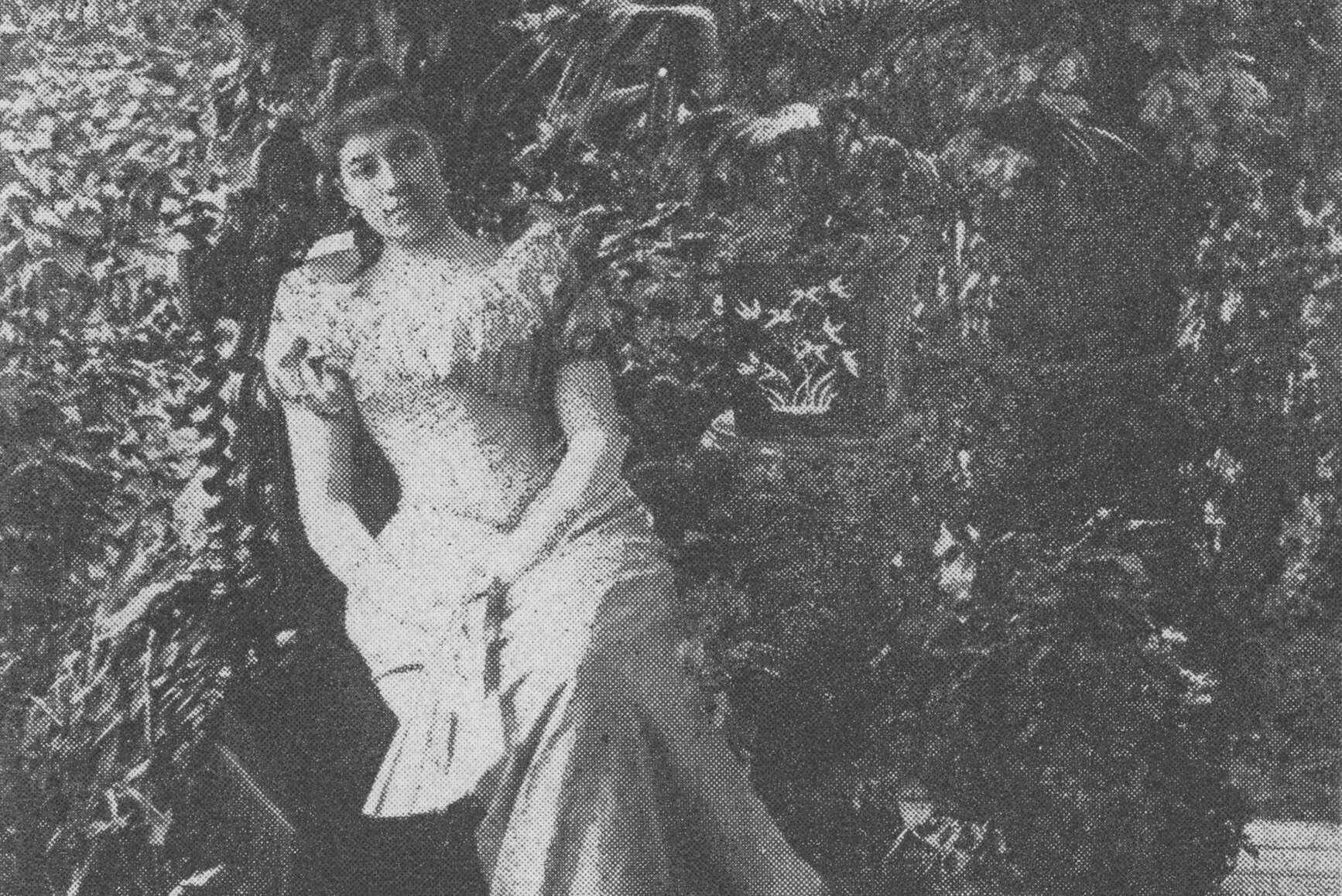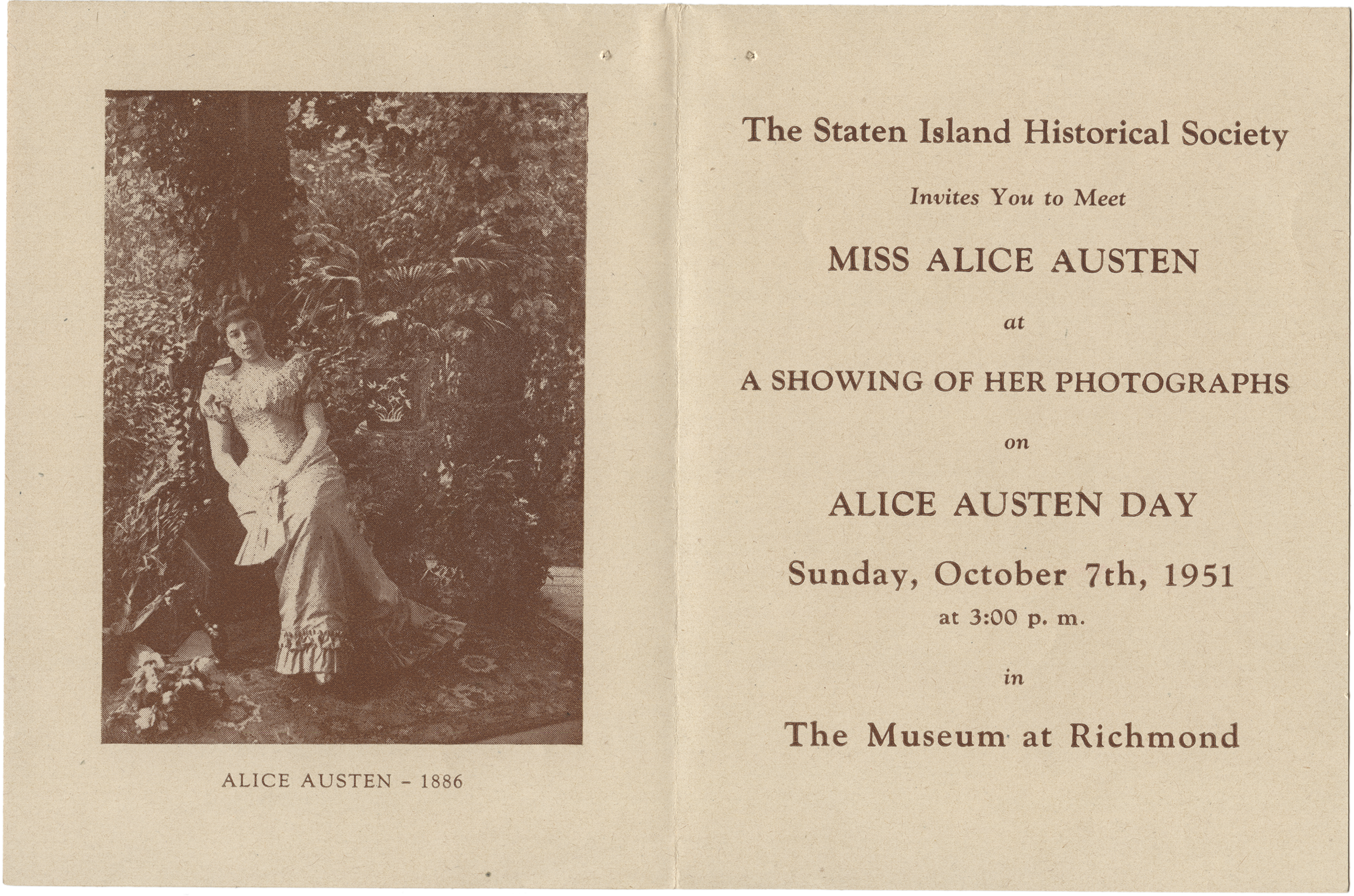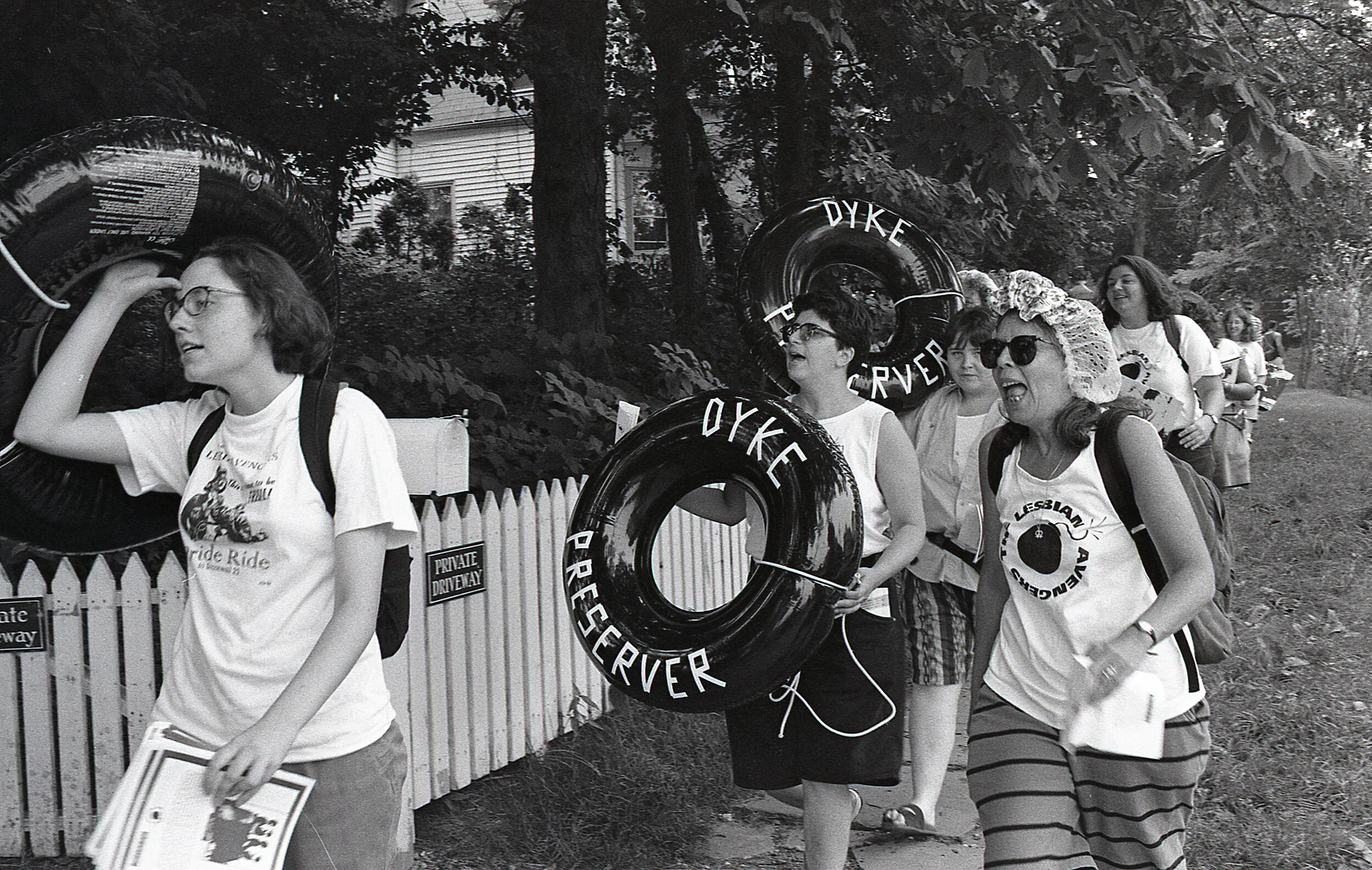Alice Austen: The Public meets Alice Austen
Miss Alice Austen and Staten Island’s Gilded Age
by Bonnie Yochelson
The Public meets
Alice Austen
In 1945, when Alice was forced to leave Clear Comfort, she called the director of the Staten Island Historical Society, who came and salvaged her photographs and a trove of family memorabilia. Three years later, the Society staff began to explore the photographs, and in 1950, a magazine editor learned about the collection and that Alice was alive. Due to his efforts, the public discovered Alice and her photographs. In the 1970s, preservationists saved Clear Comfort from destruction.
Invitation, Alice Austen Day, October 7, 1951
Oliver O. Jensen, a former LIFE editor, was enchanted with Alice’s photographs and shocked to find her living in the Staten Island poorhouse. By selling story ideas to national magazines, he raised money for her benefit. LIFE published the first story, which ran sixteen pages and included 21 of Alice’s photographs. The magazine paid $2,000 for reproduction rights, and the money allowed Alice to move from the Farm Colony to a private nursing home a month before the article appeared.
Two weeks after the LIFE article, the Staten Island Historical Society sponsored “Alice Austen Day.” With 100 modern prints on display, the celebration was the first public showing of Alice’s works. Alice and Gertrude greeted a crowd of 300 guests, including Trude Eccleston Barton. Austen was in fine form, announcing to press photographers, “I’d be taking these pictures myself if I were 100 years younger.” Alice died on June 4, 1952.
Friends of the Alice Austen House, Gateway to America, The Alice Austen House and Esplanade, 1968 proposal (cover)
With the opening of the Verrazano-Narrows Bridge in 1964, Staten Island waterfront property increased in value, and the Austen House was sold to a residential developer. Margot Gayle, a leading advocate for preserving New York’s Victorian architecture, helped found the Friends of the Alice Austen House to save the house from demolition. The Friends proposed a city park incorporating the Austen property and a waterfront esplanade extending from the house to Fort Wadsworth at the mouth of the Narrows. The Austen House was to become a photography museum. The ambitious plan never materialized, but the house was saved. In 1971, the Landmarks Preservation Commission, then five years old, designated the Austen House a New York City landmark, and in 1975, the city purchased the property.
To help raise funds for the restoration of the house, Gayle reached out to Gordon Hyatt, a producer of “The 51st State,” a weekly news series on WNET, New York’s PBS affiliate. Hyatt sent Stuart Hersh, a young freelancer, to Staten Island to do a news spot, but after meeting with Gayle, Hersh suggested a longer piece. On Christmas Day 1975, “Alice’s World,” a 28-minute documentary, aired, introducing Alice to another generation of New Yorkers. Inspired by the program, the Board of Education named P.S. 60, a new elementary school on Staten Island, the Alice Austen School.
SI Advance cover
Ann Novotny, Alice’s World, 1976
While writing a book on Ellis Island, Ann Novotny discovered Alice’s work and spent several years preparing an Austen monograph. More than twenty years after Alice died, Novotny tracked down and interviewed Alice and Gertrude’s neighbors, friends and family. She was granted permission to borrow the title of the WNET documentary, and nine months after the documentary, her book was published.
"Cameras Click at celebration of Alice Austen's Island home," Staten Island Advance, June 8, 1980 (press photo)
In a 1980 rendition of Victorian dress, Novotny (right), then President of the Friends of the Alice Austen House, holds court at a fundraiser.
When she finished her book, Novotny worked tirelessly to promote Austen’s photographs and to restore the Austen House. She co-authored the 1979 Historic Structures Report, which was an essential for fundraising. The report reconstructed the history of Clear Comfort and proposed a return to its 1896 appearance, which Alice’s photographs had documented. In 1980, Novotny co-curated an Austen exhibition at the South Street Seaport Museum. Tragically, she died suddenly of a stroke in 1982 at the age of 46 and did not live to see the establishment of the Austen House as a public museum three years later.
DYKE, A Quarterly, No. 3, 1976
In Alice’s World, Novotny discreetly referred to Gertrude as “the friend who shared Alice Austen’s older years.” The same year the book appeared, the lesbian feminist quarterly DYKE published an article that asserted in its first sentence that Alice Austen was a lesbian. The authors thanked Novotny “for help, information and photographs.” The following year, Novotny wrote an article for the “Lesbian Art and Artists” issue of Heresies, a radical feminist journal, in which she frankly described Gertrude as “the lover who was to share Alice’s life and enthusiasms for over fifty years.”
Although married, Novotny lived with Rosemary Eakins, her research assistant. As in her own life, she characterized Alice and Gertrude as “friends” for the general public and as lesbian for the feminist and lesbian communities of the 1970s.
Lesbian Avengers protest at the Alice Austen House, July 31, 1994, Courtesy of Saskia Scheffer
In 1994, wearing old fashioned bathing suits and life preservers labeled, “Dyke Preservers,” the Lesbian Avengers disrupted the annual Nautical Festival at the Alice Austen House. Inspired by the anti-AIDS group ACT UP, the Lesbian Avengers were dedicated to “fighting for lesbian visibility and survival” through direct action and humor.
Clear Comfort, 2015, © Floto + Warner
Learning that the Board of Directors had publicly denied Alice’s lesbianism, they proclaimed the Austen House Museum “a national lesbian landmark.”
What seemed like an outrageous demand in 1994 eventually came to pass. In 2017, the Alice Austen House Museum was declared a national site of LGBTQ history.








